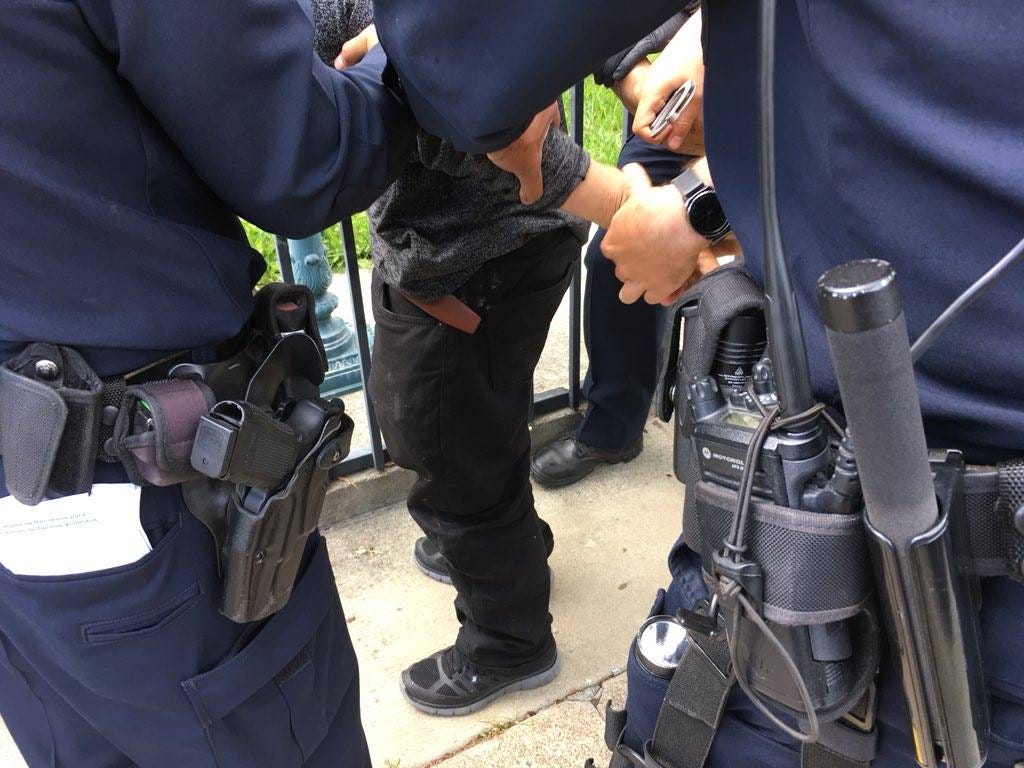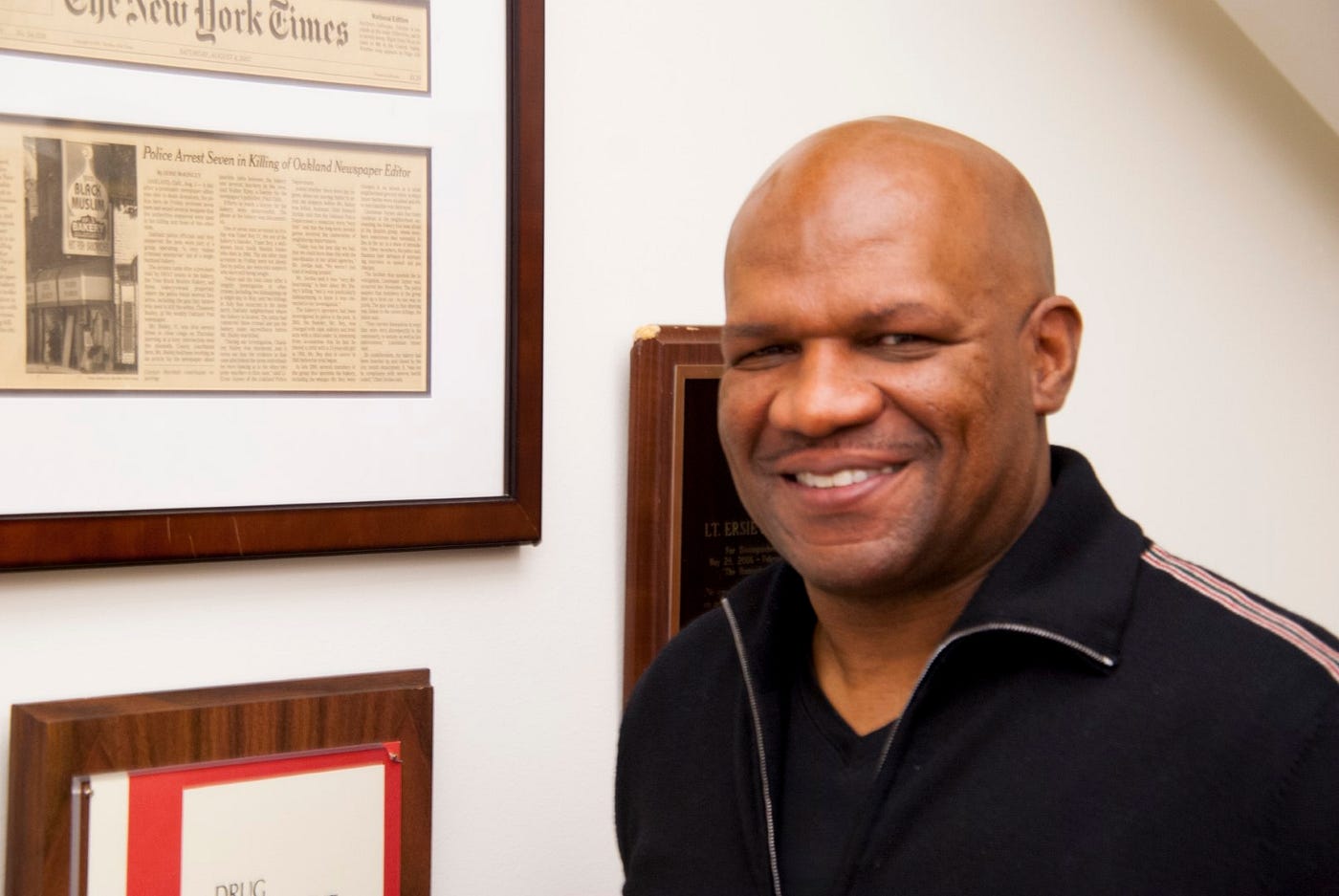
When three-year-old Carlos Nava was shot and killed on the streets of Oakland in 2011, the city’s police force had been depleted. Carlos was out shopping with his mother when a drive-by shooter targeted two men standing nearby at 65th Avenue and International Boulevard. The two men survived, but the toddler’s death shocked the region and horrified even the most calloused observers of Oakland’s seemingly endless epidemic of violent crime.
“If we had the right resources, this could be as safe as any city,” then-police chief Anthony Batts complained to the San Francisco Chronicle. “Maybe the loss of young Carlos will wake this city up.”
Batts had joined the Oakland Police Department less than two years prior. When he was hired, Oakland had just under 800 police officers, down from a peak of 832 in November 2008. But in 2010, as the Great Recession choked city budgets, Oakland laid off 80 officers. By the time Carlos Nava was shot, Oakland had about 650.
Even then, Oakland had only a slightly below-average number of officers per population among cities of more than 100,000 residents. Batts was adamant that he needed as many as 900 officers to effectively police the city. He resigned in October 2011, two months after Carlos Nava was shot, citing a lack of resources. (Batts would later become commissioner of the Baltimore Police Department in 2012, a department with one of the highest rates of officers per population in the country. He was fired in 2015 after riots over the in-custody death of Freddie Gray and a spike in homicides.)
During the last few years, Oakland has seen a historic drop in shootings and murders. While some studies have shown that growing a police force can help reduce crime, experts caution that effective deployment is even more important.

After Batts’s departure, Oakland politicians set ambitious goals for growing the department. “My number-one goal for 2013 is to figure out how to get Oakland to 1,000 cops,” wrote then-councilmember and current mayor Libby Schaaf in an email on February 5, 2013. She estimated that it was possible to get to that goal by 2018.
Schaaf would announce her campaign for mayor later that year and defeat incumbent Jean Quan in the 2014 election. But she never reached her goal of 1,000 officers. A series of scandals involving rookie officers in 2015 and 2016 slowed hiring, and since the beginning of 2017, Oakland has hovered between 730 and 760 officers, still below the department’s pre-recession levels.
Yet during the last few years, Oakland has seen a historic drop in shootings and murders. While some studies have shown that growing a police force can help reduce crime, experts caution that effective deployment is even more important. Contrary to conventional wisdom, Oakland has become an example of how a big increase in police staffing isn’t necessary for a big drop in crime. Smarter deployments of the same force can have better results than far-more-resourced departments.
Oakland city leaders have largely credited the reduction of violent crime in Oakland to Operation Ceasefire, a violence-reduction strategy developed in Boston in the mid-1990s that has been adopted by departments nationwide.
Operation Ceasefire is an expansive strategy that requires cooperation between law enforcement, prosecutors, human services, community groups, faith-based organizations and, crucially, people who are involved in violent crime. Law-enforcement investigators gather intelligence about groups of people who may be involved in violent crime or are at risk of committing a violent crime. Those people are called to a meeting, where they’re offered social services and support.
If they don’t take the help and do commit a violent crime, they’re told that police are watching, and they’ll be swiftly arrested and prosecuted.
Operation Ceasefire relies on the theory that only a few groups of people are driving most of the violence in cities as they become entrenched in turf wars or petty disputes escalate into sprawling retaliatory violence. By directly intervening with the people most at risk for committing violent acts, community groups and law enforcement hope to break the cycle of violence, both by providing people willing to make a life change with the opportunity to do so and by taking people who refuse to off the streets.
“I am grateful that our community-led Ceasefire strategy has given Oakland an unprecedented six consecutive years of reduced homicides and shootings combined and the lowest four-year average of homicides in Oakland’s recorded history,” Schaaf said at her inaugural address in January after handily winning re-election in November.
Indeed, a study by Northeastern University in Boston released last year credited Operation Ceasefire with a 32 percent reduction in shootings citywide from 2011 to 2017. According to the study, back in 2011, Oakland had 93 gun homicides and 617 injury shootings. By 2017, it had 63 gun homicides and 277 injury shootings. Homicides and shootings continued to decline in 2018.

Oakland police captain Ersie Joyner has headed the Operation Ceasefire unit since late 2012. It’s the second iteration of the program in Oakland.
“The first time we did it, we fell on our faces drastically,” Joyner said in an interview with the Bold Italic in his East Oakland office. “It was kind of a boutique-shop thing—it was more words than substance.”
Oakland Community Organizations still had faith in the concept and pushed for a more robust Operation Ceasefire strategy even as the first iteration was failing, Joyner said. They traveled the country to see how it was implemented in other cities, then returned to Oakland and held a series of community meetings. They invited politicians and “just kept hitting them with statistics,” Joyner said.
“When it was all said and done, and the lights and cameras went away, the politicians were left with the fact with we did not truly have a crime strategy,” Joyner said.

When Joyner was first assigned to the Operation Ceasefire unit in 2012, he said it was only himself; Reygan Harmon, a liaison with Mayor Quan’s office; and executive assistant Barbara DeSalvo. Joyner said he built his team by bugging the city’s area commanders for resources. Now he has four full-time teams of eight officers each, plus five sergeants and a lieutenant.
Operation Ceasefire in Oakland has required a painstaking process of building relationships and trust between partner organizations.
Operation Ceasefire must be tailor-made for the community, Joyner stressed. It requires extensive coordination, cooperation and trust between the involved groups. It has required listening and learning to be effective. For example, Joyner said that one of the first call-ins was held at the East Oakland Youth Development Center on International Boulevard. Attendance was mandatory for everyone on probation and parole. When social workers followed up with attendees, some of them pointed out that they had had to cross rival territory to get to the meeting. While the call-in was ostensibly held to help them, they learned that having them just drive there had put them at risk of being shot.
Operation Ceasefire in Oakland has required a painstaking process of building relationships and trust between partner organizations. It’s required pulling back the curtain and allowing their partners to see how police investigators identify people who are at risk of committing a violent crime. Police investigators hold weekly shooting reviews, analyzing each shooting and homicide over the prior week. They look at victims, suspects and which groups have been most active. They track rivalries. If members of one group have been the victims of shootings that week, they know that that group is at risk of retaliating.
Better investigations can lead to less violence as well, Joyner said. If someone commits a shooting and they’re arrested, there’s no temptation to retaliate. In addition to reducing violence, Oakland has improved its homicide clearance rate in recent years. From 2011 to 2013, Oakland police solved only 34–36 percent of murders. In 2016, the department’s clearance rate was 51.8 percent. In 2017, it was 60.9 percent.
And while it seems that better policing has played a large role in the reduction of violence in Oakland, Joyner said one group doesn’t get enough credit.
“The people who are the unsung heroes in my opinion are the young men who actually made different decisions,” Joyner said. “I can’t imagine being a person from this community, being shot, knowing who shot me, seeing them every day and having to make a decision to not go and retaliate. To me, I tell the young men all the time, it takes more courage not to shoot than it takes to shoot.”







